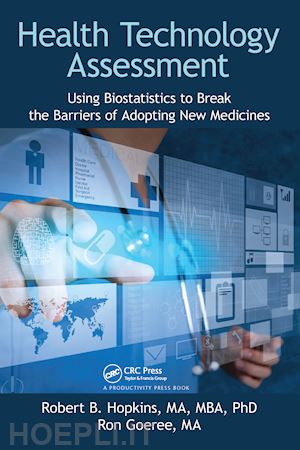Robert Borden Hopkins, PhD, has been the biostatistician at the Programs for the Assessment of Technology in Health (PATH) Research Institute at McMaster University for the past 10 years and has more than 25 years of experience in health care. His role as the biostatistician continues to include educational support at the graduate level; designing and analyzing systematic reviews; designing, conducting and analyzing clinical studies (field evaluations); conducting economic evaluations, burden of illness studies and health technology assessments and providing peer review for more than 20 academic journals and government agencies.Rob was the lead biostatistician for more than 75 funded research projects worth over $15 million, which generated over 100 peer-reviewed publications and abstracts and 40 technical reports for the government, as well over 200 conference, academic or government presentations. Recent methodological issues explored include handling of missing data in meta-analysis, trials and economic evaluations; network meta- analysis; trial-based economic analysis and cost/burden of illness studies. Rob has presented his research at the following conferences: Society of Medical Decision Making, International Society for Pharmacoeconomics and Outcomes Research, Drug Information Association, Canadian Association for Population Therapeutics, Canadian Agency for Drugs and Technologies in Health (CADTH), Canadian Association for Health Services and Policy Research, Society for Clinical Trials, Health Technology Assessment International, Canadian Statistical Society, American Statistical Society, Canadian Health Economics Association and International Health Economics Association.Ron Goeree, MA, is currently a professor in the Department of Clinical Epidemiology & Biostatistics, Faculty of Health Sciences, at McMaster University in Hamilton, Ontario, Canada, where he is the founding field leader for graduate studies of health technology assessment (HTA) at McMaster University. Ron has established workshops on HTA all over the world, from Singapore to Oslo, and has published extensively (over 400 books, chapters, articles and abstracts). He has reviewed over 120 journal submissions and 80 national or provincial drug submissions or reports; Ron has served on nearly 50 industry advisory boards and more than 60 government/decision-maker committees and boards.Ron’s research is conducted at the Programs for Assessment of Health Technology Research Institute at St. Joseph’s Healthcare Hamilton, where he has been the director since 2006. ‘As director of PATH, he has demonstrated the essential role health technology assessment can and should play in meeting the needs of health of health decision-makers. As an innovator, he helped pioneer the methodological framework for the field evaluation of non-drug technologies. As a dedicated professor and mentor, he has trained literally thousands of students, researchers, and decision-makers, making an immense contribution to the capacity in Canada to produce and use health technology assessment’, said O’Rourke, President and CEO of CADTH. O’Rourke further said that ‘Professor Goeree is one of the pre-eminent HTA researchers and educators in the world’ (CADTH News Release 2012). Ron was the 2012 recipient of the CADTH HTA Excellence Award for lifetime and sustained achievement; he is co-editor of Value in Health and sits on the editorial boards of Medical Decision Making and the Journal of Medical Economics.












